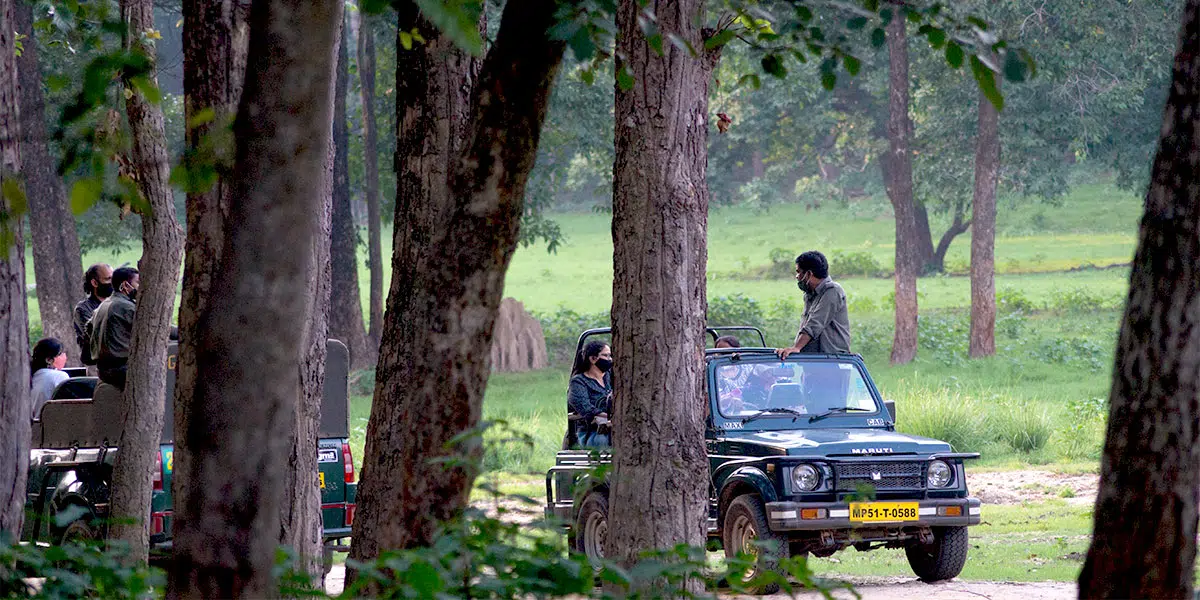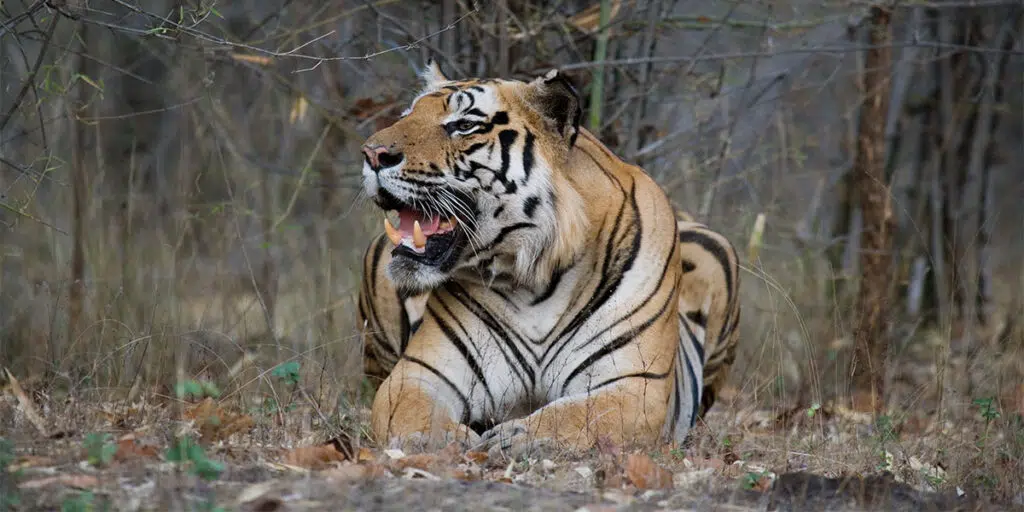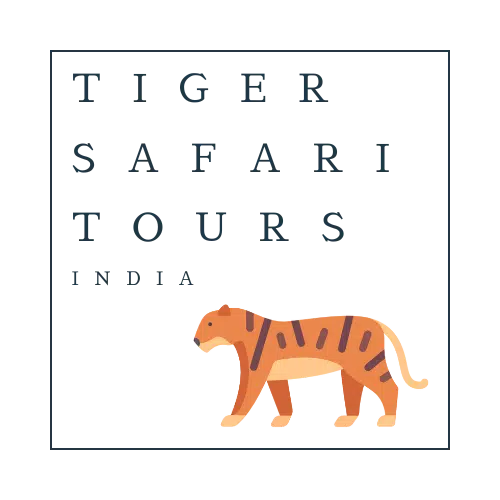An excitement-filled heart-pumping tiger safari can be a whole new adrenaline-rushing experience. Seeing the royal Bengal tiger in its natural habitat can be a lifetime experience. The aura, the confident walk and the stare from the tiger’s eyes are without any doubt an unparalleled experience.
We, at Tiger Safari Tours India, work to provide you, our wildlife enthusiast guests with memories of the elusive big cat. No words can explain how a tiger sighting in the jungle during a safari in India. The gracious demeanour, the regal strides and the whole experience as the tiger blends with the wilderness.

We bring you a list of the Top 9 Tips to plan and experience the most special tiger safari tour in India.
- 1. Book in Advance / 120 days
- 2. Opt for Naturalist
- 3. Mix of safari zones
- 4. Things to carry
- 5. Proper clothing
- 6. Minimum Stay Days and No. of safaris:
- 7. Accommodation near to safari gate/time from hotel to safari gate
- 8. Plan the Itinerary right
- 9. Choose the best time of the year as per your travel style
“Even if you have not seen the tiger, tiger has seen you.”
A Popular Proverb

1. Book in Advance / 120 days
The most important part of an Indian tiger tour is the safari. Safari permits for most prominent national parks in India are booked online from the government portals. Availability opens up at least 120 days prior to the date of the safari. The rush is generally heavy from the time these permits open as first cum first book is followed. Permits for Ranthambore tiger reserve open 365 days in advance, for Madhya Pradesh tiger reserves open 120 days in advance, and Tadoba Andheri National Park the permits open 180 days prior to the date of the safari. There are last-minute tatkal permits also but depending on these is too uncertain.
- Rajasthan Safari Portal – Ranthambore: Click Here
- Madhya Pradesh Safari Portal- Bandhavgarh, Kanha, Pench, Satpura & Panna: Click Here
- Maharashtra Safari Portal – Tadoba: Click Here
2. Opt for Naturalist
As per the forest department, there are few compulsory services/fees to avail of jungle safari in Indian National Parks. These services are a safari permit, a safari vehicle registered with the forest department, and a forest guide. Forest Guides are locals from the area who have taken up safari tourism as a means of living and have been trained and certified. In addition, opting for a naturalist a.k.a English-speaking guide is helpful to enhance the safari experience and make it a holistic wildlife tour.
We, at TSTI, have selected forest guides and a team of naturalists who work on the ground level to provide our guests with the best information and experience. We have even taken up training for inquisitive forest guides to help them enhance their career. We train them in their communication skills and provide hospitality knowledge.
3. Mix of safari zones
Indian Forest departments have divided the tourism area into zones (core and buffer) which are further divided as routes. A safari zone can be selected when the permit is booked online, and routes are allotted by the forest officials on the day of the safari. The perfect safari adventure should introduce you to the forest, its flora and its fauna. Choosing to book a mix of different safari zones as per local intelligence i.e. present tiger movement and territory, introduction on new cubs and dominant tigers in the ecosystem. Undoubtedly, this will help in the most fruitful tiger safari in India.

4. Things to carry
- Tickets, Passport, Itinerary, Travel Insurance
- Medicines
- Safari Luggage
- Photography Equipment
- Clothing
- Binoculars
- Travel Pillow
- Universal Plug Adaptors
- Sunblock
5. Proper clothing
Safaris in an open jeep have an airflow variable that may affect comfort. This can be tackled by proper clothing, as per the time of the year and slot for the safari. Morning safaris start at sunrise and afternoon safari end at sunset. Basic clothing should be relaxed and muted earthen colours are most appropriate. For the morning safari, fleece or jumper is most recommended. Once the sun is out, a simple T-shirt is enough. At the end of the afternoon safari, a warm clothing layer may be required due to the drop in temperature as the sun sets. From Mid-oct to January, it is cold in the morning safaris, and Feb to mid-April is pleasant. Post-April to June end is the peak of summer with some rain showers in the last week of June. This is the start of monsoons.
Checklist for winter clothing: fleeces, jackets, hats, gloves and scarves
6. Minimum Stay Days and No. of safaris:
Different people have different travel styles. Therefore like to stay at a particular destination for various no. of nights. For a safari tour, 2 nights or 3 nights along with 4-5 safaris are recommended. There are a few logical reasons to support the recommendation.
- Firstly, the distance between one destination to the other. Most of the national parks are 3-4 hours apart from each other by road, which is the best way to connect.
- Secondly, the chances of sighting increase the more you enter the jungle.
- Thirdly, timings for safaris are fixed therefore arrival time is highly dependent on the number of safaris that can be availed.
- Fourthly, explore the destination with nature trails and wildlife experts.
Minimum stay and safaris are very debatable. Consequently, to make it easy 2 nights with 3-4 safaris and 3 nights with 4-5 safaris per destination is an ideal combo. Let your tour operator suggest proportionally to no. of goals you are covering.

7. Accommodation near to safari gate/time from hotel to safari gate
Where to stay is the most asked question to us by guests planning a wildlife safari holiday with us. We generally recommend rustic wilderness lodges as per guest preference for accommodation budget. These hotels and resorts are shortlisted by our team by local recce. Our criteria for selecting a particular accommodation partner are:
- Distance from the safari gate
- Level of services
- Experience of naturalist
- Staff training and management
- Responsible tourism
One of the main selection points for us is the distance from the safari gate. Our team strongly believes the time guests travel to the entry gate affects when they wake up.
8. Plan the Itinerary right
The role of a tour operator planning an Indian tiger safari tour itinerary for you cannot be ignored or diminished. Most of the lodges offer special pricing to tour operators. A destination specialist for India will have travelled to the regions that you plan to travel to and will be able to guide and organise well. Tour operators should be considered to prepare their itinerary for below factors:
- Which destinations and national parks to include
- Connectivity between national parks
- Availability of safari permits
- Skilled escorts and guides for the best experience
- Competitive prices for transport vehicles
- Currently sighting active safari zones
- Comfortable resorts with holistic wilderness experiences
9. Choose the best time of the year as per your travel style
Choosing the best-suited time to travel for a tiger safari in India depends on two factors, which are:
- Operational time of the core zones: Core zones are closed during monsoons, the centre of tigers, and wildlife sightings. However, buffer zones have reported sightings and are expected to be future core zones as the tiger population and density increase in the tiger reserves.
- Weather and Climate: Post monsoons, the national parks open up in India though the booking for safari permits starts 120 days prior to the date of the safari. Below is a month-wise table of temperatures across India:

